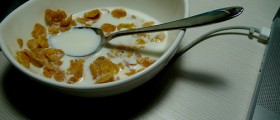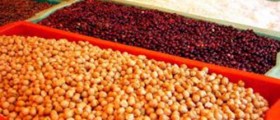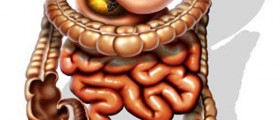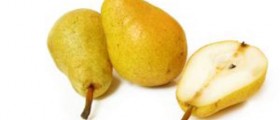
About high fiber diet
Fibers are resistant substances found in plants consisting of complex carbohydrates. Fiber is degradation resistant, meaning it cannot be digested, although bacteria in the large intestine can degrade some sorts of fiber. There are two types of fiber – one which dissolves in water and the other which does not. Main sources of soluble fiber are fruits, vegetables, nuts, brown rice, seeds, oat, barley and rice bran, dried beans and peas, and these fibers control the levels of cholesterol and blood sugar. Water-insoluble fibers are found in vegetables, fruit skins, nuts, cereals, wheat and corn bran and whole grain bread, and they cause the food to stay in the bowels for shorter time and stimulate bowel movement, which is why they are recommended for intestinal disorders including irritable bowel syndrome and diverticulitis.
A diet rich in fiber is beneficial for the whole digestive system; chewing lasts longer, so more salivary and gastric juice is produced. Thus dental plaque and decay are reduced and the person gets the feeling of being full sooner. High fiber diet is also responsible for the speed of digestion and evacuation. Soluble fiber helps in fighting cholesterol, by either lowering it or binding it for removal. During the fermentation of the soluble fiber inside the colon, short chain fatty acids are produced which are responsible for further regulation of sugar and cholesterol. In addition, studies show that the increased intake of fiber helps reduce the risk of blood clots. Contrary to this, water-insoluble fibers act as laxatives due to their tendency to ferment slowly or not at all.
Numerous studies confirmed that fiber can lower the risk of colon and rectal cancer. It is suggested that the incidence of colorectal cancer in the U.S. could be decreased by 31% if people were to increase their daily intake of fiber to 13 grams. Moreover, there is evidence that consumption of fiber reduces the occurrence of prostate cancer. A high fiber diet also protects against the formation of cracks and holes in the wall of the colon, which appear in the course of the lifetime as a result of sustained pressure. The condition can be so severe that it might require surgery.
Recommendations
Recommended daily fiber intake for adults is between 20-35 grams, while Americans on average have only 14 grams. The formula for the children’s daily intake of fiber is age of the child plus five for children over the age of two. Since there is evidence that low fiber diet accounts for the incidence of 35% of cancers in the U.S. as well as the occurrence of diabetes, heart disease, cataracts, and even aging, The American Dietetic Association suggests all Americans take 25-35 grams of fiber per day. High fiber diet also abounds in vitamins, antioxidants and other nutrients that can slow down the aging and degenerative processes.

















Your thoughts on this
Loading...